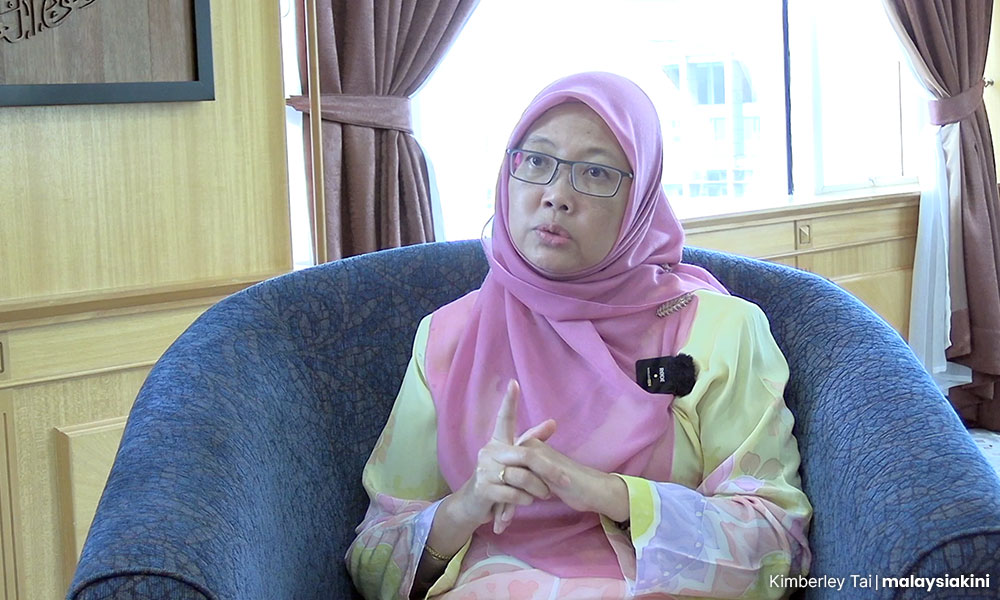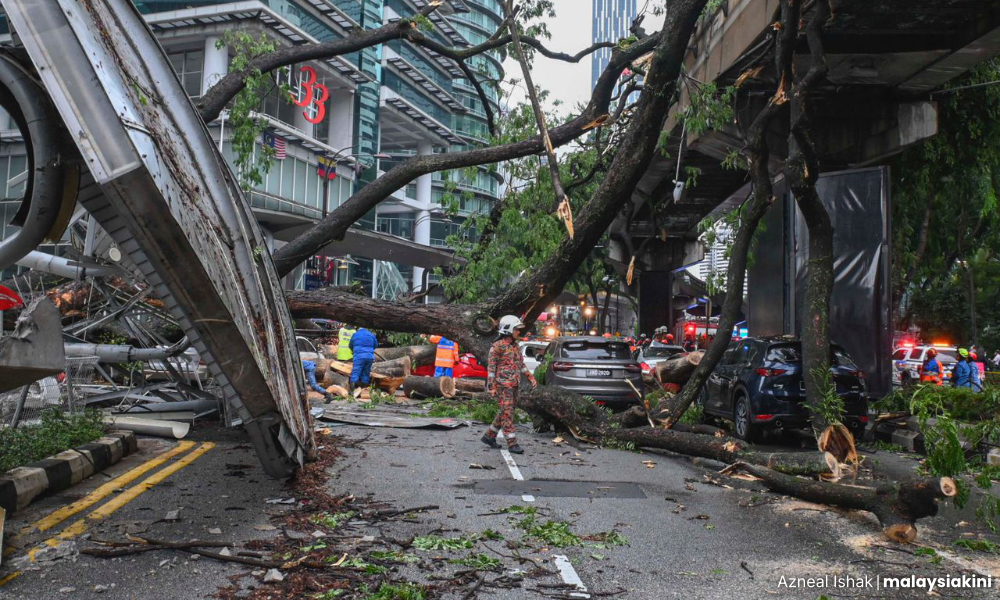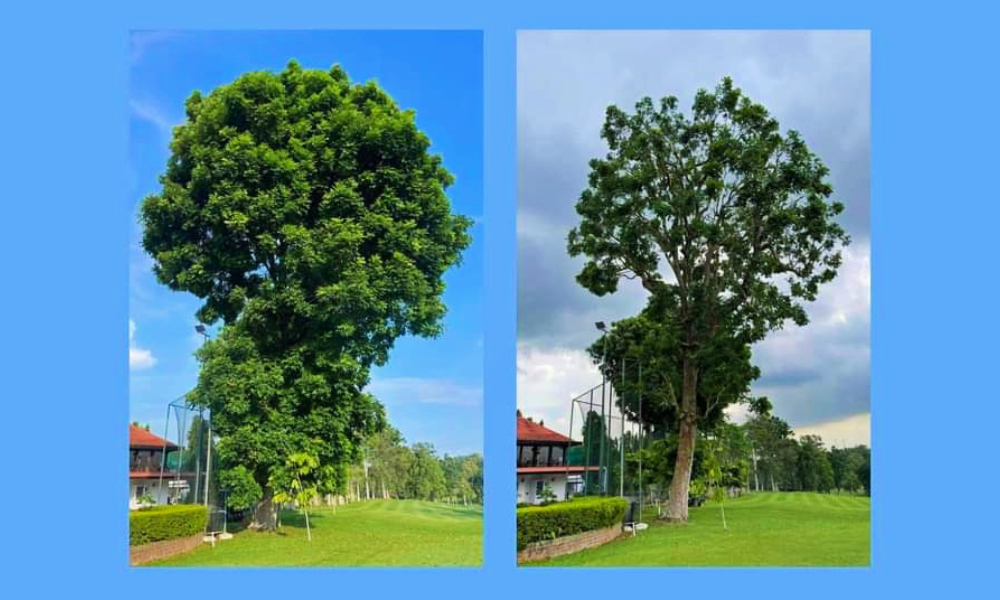Several trees have fallen around Kuala Lumpur during the current rainy season there, causing mayhem. However, this is not just a story about trees.
It's about our poor urban planning and “tidak apa” local councils. It's about how trees are not treated as strategic national assets, unlike in Singapore.
On May 7, a huge heritage raintree fell in KL’s posh Golden Triangle area. There was one death, one injury, and 17 damaged vehicles - and disrupted the monorail service.
As usual, the first response was to deny negligence by Kuala Lumpur City Hall (DBKL).
The New Straits Times quoted Minister in the Prime Minister’s Department (Federal Territories) Dr Zaliha Mustafa as saying that arborists (tree experts) inspect the trees every two years.
She added that DBKL would work on guidelines to maintain old city trees “soonest possible”.

However, if the tree was well inspected, why did arborists not warn that it might fall?
I could almost hear a cartoon voice somewhere saying, “Dagnabbit! Well, whad'ya know folks… looks like another act of God (rain storm)!”
Knee jerk reaction
The minister also seemed blissfully unaware that in 2020, DBKL had already announced it would preserve grand old “heritage shade trees”.
DBKL has also had a Tree Management Plan, drawn up by multiple agencies and universities, since 2019.
So why the need for yet more “guidelines”? However, one week later, the tune changed when another falling tree in the same area nearly hit the car of Malacca Chief Minister Ab Rauf Yusoh.
This time DBKL was instructed to take “immediate action” to cut down “high-risk trees” (as in beautiful old ones).

Ah, isn't it amazing how urgent action suddenly overtakes lumbering promises to draw up “guidelines” when a VIP is involved? This, sadly, is a sign of our feudal “dua darjat” (unequal) culture.
But is it just another poorly thought knee-jerk reaction? To answer that, we must explore the root causes of our tree troubles.
‘Strangling our trees’
Famous botanist Dr Saw Leng Guan, a former director of Forest Research Institute Malaysia (FRIM), said DBKL needs to maintain green space around trees. Covering that with concrete pavements or tar roads will slowly “strangle trees”, leading to eventual collapse.
"Above ground, everything looks nice. But underground, we cannot see what is happening. We don't realise these old trees (roots), which are living things, can't get enough water, nutrients and oxygen,” he told NST.
Doesn't that sound like a metaphor for Malaysia's problems?
Similarly, arborist Hashim Gombri told The Star that big rain trees can collapse when concrete suffocates their roots.
We want KL to rival Singapore’s world-famous Garden City but our root problem, pardon the pun, is that we lack their maintenance and planning culture. In short, we crave the shiny packaging but may lack substance underneath.
We’ve all seen how some of our town trees are badly mutilated, with only tall ugly stumps remaining.
Renowned local landscape architect Ng Seksan points out that the common local practice of pollarding (top-cutting) trees may leave them diseased with only weak skinny branches regrowing.
Instead, the proper way to trim trees is like a hairdresser - carefully thinning our crowning glories without altering their structure or shape. This is how Singapore does it.

If we won't allow our hair to be simply cut by anyone, why do we allow “chinchai” (shoddy) contractors to concrete or chainsaw our trees to slow deaths?
It's time to stop treating our trees as mere decorative items. They provide crucial shade for that urban bowl called the Klang Valley which traps heat not just from the scorching sun but also from millions of vehicles and aircons belching out hot gas. Without trees, this bowl would boil over.
Making a city more pleasant and liveable not only improves taxpayers’ lives. They also attract investments, talent and tourists.
Former Singapore prime minister Lee Kuan Yew wrote, "After independence, I searched for some dramatic way to distinguish ourselves from the other third world countries. I settled for a clean and green Singapore.”
Urban landscaping was so important that it was even discussed at their cabinet level. Lee was not only the prime minister but also the unofficial “chief gardener”.
When visiting Singapore, I am always amazed at how they try to green every corner of the city - even overhead pedestrian bridges and building walls.
The island has little land but its beauty is maximised with 300 parks and four nature reserves! Over here, the Selangor government is allowing the destruction of the urban lung called the Shah Alam Community Forest (SACF).
Similarly, Malaysia's urban trees should be treated as national treasures and investments.
Trees are a part of our city infrastructure, as important as drainage – which has also failed in KL with frequent flash floods.
What's the point of having the world's second tallest thing poking up into the sky when the basics like flood control and tree care are doing poorly?
Pakatan doing better?
Petaling Jaya MP Lee Chean Chung has called on the Petaling Jaya City Council (MBPJ) to appoint a certified arborist to inspect high-risk trees.
I live in PJ. It's supposed to be an “advanced city” but yet, it lacks arborists?

PJ’s roadside landscaping is very haphazard. Some places lack trees while other areas have new trees planted between existing ones! Where is the supervision?
Yet, MBPJ has been under a PKR-led state government since 2008. Isn't it supposed to do better?
Every Malaysian city should have arborists giving expert care to their trees. Enough of this feudal culture that treats trees as stepchildren and politicians as demigods.
Now, after a tree nearly fell on a VIP car, there is a rush by DBKL to cut down grand old trees. However, that could be a mistake.
Ng points out that alluring cities like Hangzhou, China or Kyoto, Japan try not to cut down their old street trees. Instead, they support them with steel or timber props. In Singapore, cable systems are used.

Yes, it takes more care and work but isn't that what Madani is about?
The tragedy is that Malaysia does have local tree experts, such as those cited above. However, somehow their advice doesn't seem to count. Maybe they lack the right “cables”.
Are there vested interests preventing this? Are the wrong pockets being filled?
Is this because the leaders of local councils are political appointees, rather than elected by residents? More loyal to their feudal overlords than to the people they are supposed to serve?
What if there was a by-election in KL or PJ now? Just like the one at Kuala Kubu Baharu recently. Would we see a sudden outpouring of official attention on residents’ needs, like proper tree maintenance?
But there's no need to wish that any politician passes away or resigns to get a by-election. All that's needed is to restore local council elections!
Poor management, ignoring underlying problems and lack of accountability lead to falling trees not only during strong storms.
They also led to national collapse during the 1998 Asian economic crisis and the 2020 Covid-19 crisis.
In short, our tree troubles are symptoms of deeper social diseases. It's time we fixed our “root problems”. - Mkini
ANDREW SIA is a veteran journalist who likes teh tarik khau kurang manis. You are welcome to give him ideas to brew at tehtarik@gmail.com.
The views expressed here are those of the author/contributor and do not necessarily represent the views of MMKtT.



No comments:
Post a Comment
Note: Only a member of this blog may post a comment.